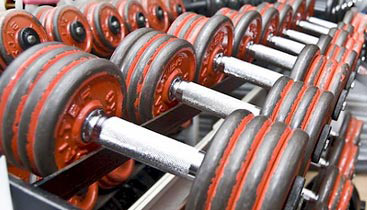HOW OFTEN TO INCREASE THE WEIGHT WHEN WORKING OUT?

The Law Of Progressive Overload.
This is the ultimate bottom line when it comes to your entire muscle building workout plan.
Simply put, this law states that in order for you to experience continual, ongoing gains in muscle size, you must progressively increase the total amount of tension that is placed on your muscles during your workouts over time.
Muscles grow by adapting to stress, and if you aren’t constantly pushing the envelope each week by either lifting more total weight on your exercises or performing more reps using the same weight, you quite simply are not going to make any appreciable progress over time.
At the very root of it all, building muscle is all about building strength. Train for performance first, and muscle growth will come as an inevitable by-product.
But just how often should you increase the weight on each exercise, and by how much?

How Often To Increase Weight When Working Out
The simple answer?
Aim to add more weight to the bar as often as you can while staying within your targeted rep range and maintaining perfect form.
There really isn’t a whole lot more to it than that.
The rate at which you can increase the total weight lifted is going to depend on a couple of factors…
First off, the less experienced you are, the faster you’ll typically gain strength. As a beginner, not only will you be gaining new muscle tissue at an accelerated pace, but your CNS will also be quickly adapting as it learns to perform each movement with increased efficiency. This occurs because intense weight training is still a new stimulus for your body.
A complete beginner will be able to increase the amount of weight he or she is lifting at a reasonably quicker rate than a more advanced trainee.
Secondly, it largely depends on the specific exercise you’re performing. Naturally, the more muscles a movement utilizes, the faster you’ll be able to add weight to that exercise. A big compound lift such as a deadlift (which involves the quads, hamstrings, glutes, spinal erectors, lats, traps and abdominals) presents a far greater opportunity for total strength increases in comparison to a tricep pressdown.
There really is no exact protocol here, but the overall guideline I would give is simply this…
1) Focus on increasing the total number of reps that you can perform with a given weight until you’re able to hit the upper end of your targeted rep range with that specific weight. So, if your targeted rep range is 5-7, wait until you can perform 7 clean reps with a given weight before adding more.
2) Once you reach the upper end of your targeted rep range with a specific weight, increase the weight on the following workout. For smaller isolation lifts, a typical increase would be 2.5 – 5 pounds. On larger compound lifts, it could be anywhere from 5 – 15 pounds.
Again though, this highly depends on the specific exercise. Even amongst individual compound lifts it can vary quite a bit. Adding 15 pounds to a leg press is not a huge amount, whereas adding 15 pounds to an overhead press is quite a large jump, and 5 pounds would likely be more appropriate for that lift.
Much of this will ultimately just come down to experience as you get a feel for each movement and learn how your body responds.

Also note that you do not necessarily have to use the same weight across all of your sets for a given exercise. If you were performing 4 sets of bench presses, and you could only squeeze out 5 reps on your first 2 sets with a given weight, you could go ahead and decrease the weight on the following 2 sets to ensure that you stay within your targeted rep range.
Once again, my basic recommendation is simply to add more weight to the bar as often as you can while staying within your targeted rep range and maintaining perfect form.
This will usually entail a total weight increase roughly every 1-3 weeks on most lifts.
And that previous point is crucial.
True progression means that your form remains exactly the same every time you increase the weight. If your range of motion begins shortening, you start using excessive momentum, your rep speed increases and/or your technique just gets downright sloppy, you’re simply adding weight at too fast a pace.
Building muscle is not a sprint; it’s a marathon.
Keep your ego in check, take your time, and focus on gradually increasing the weight while maintaining perfect technique at all times. Not only is lifting heavier weights with inferior form NOT going to help you gain muscle faster, but it’s going to greatly increase your chances for injury as well.
Progressive overload absolutely is the most important, foundational principle of your training routine, but it must be implemented with caution and common sense if you want to produce permanent gains over the long term.
If you found this article helpful, make sure to sign up for your FREE custom fitness plan below...




